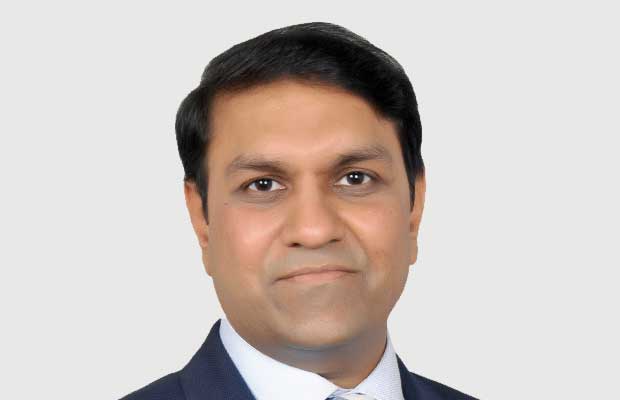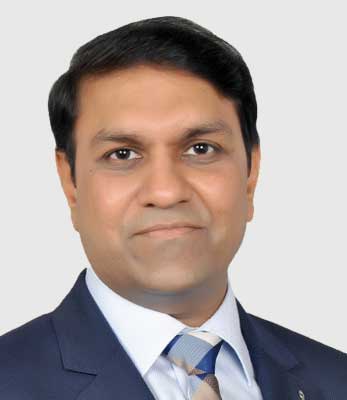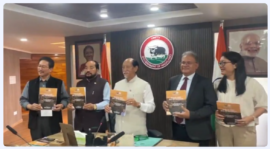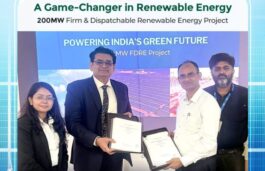
Q. To begin with, how do you see your journey with Renewables Industry?
I started my journey in Renewables Energy from the days of completing my masters from IIT, Bombay. Since then I am part of this industry in geographies like US, Germany and India. Started my journey as Design Engineer in RE Industry and I have worked in EPC, Modules, Inverters and Project Development in various roles.

Kapil Maheshwari, CEO, Hinduja Renewables Energy Pvt Ltd
Today as CEO of a leading IPP like Hinduja Renewables, I see my journey in RE industry very challenging and exciting. Have gone through lot of ups and downs, mergers and acquisition and roles varying from technical to sales to operations.
Developing Business and team from scratch while working in Hinduja Renewables feels like working in a start-up in a big group.
Q. In your view, what are the factors that will help in driving the country’s march towards 100 GW solar power?
In my view, the country has put in solid foundations in Solar Power sector where the MNRE and SECI are guiding centrally various states to realise their RE potentials. The scales of economy are improving, making Solar power especially PV technology a very attractive field for generating cost effective power which is green. Following factors will help in country’s march towards 100 GW mark:
a. Easy availability of equipment, indigenously for developing solar power through PV technology. Opening of PV Cells manufacturing and module manufacturing industry in the SEZs with tax benefits.
b. Government subsidy schemes to help promote solar power towards government, educational institutions and hospitals which have the highest inertia to change.
c. Government policies to promote Solar power and initiatives which bring down the cost of power to C&I customers. Presently all DISCOMs are trying hard to make solar power prohibitive through Open Access route. It is also heard that Net-metering will also be turning to Gross-metering in most states.
Such move will obstruct the proliferation of solar power in cities and households which government should address immediately in favour of solar power industry.
d. Make laws to promote Rooftop Solar in Building design and introduce BIPVs.
e. Make Solar based Charging infrastructure free from any tax/fees/license. Let this be governed on supply demand economics by open market.
Q. Please explain up to what extent the new technologies such as Li-Ion batteries will support in achieving the government’s renewable energy targets?
As penetration of Renewables increases in the Grid, we need to adopt storage. It could be any form of storage like batteries, pump storage etc. Presently Li-Ion is the most promising technology.
Technology road map for Li-ion batteries will follow like Solar modules. Prices are coming down every quarter. While the usage of Li-ion in India will largely be driven by Electric Vehicle, stationary storage will be very important when the price point hits $100/kWh. Also, a secondary life for batteries used in mobility will be significant in stationary storage.
The growing EVs will require charging infrastructure which will be built around grid power initially in cities. As the infrastructure will move away from cities and onto highways, RE power will make more economic sense than grid power for such power infrastructure due to decreased cost of land and easy availability. Charging EVs from renewables is the only sustainable solution.
So, in my opinion such new technologies are going to provide disruptive methods in which we powered our cars and in turn improve the RE capacity of the country supporting Government’s targets.
Q. If 25% safeguard duty be implemented. What do you think the government’s target of achieving 100 GW solar by 2022 go hand in hand?
SGD have increased the cost of solar projects which will have a dampening effect on the vision of government to achieve 100 GW by 2022.
This move was done to help the domestic module manufacturing industry but unfortunately it has left several questions unanswered like why for only 2 years, how much it will help domestic suppliers, are domestic players ready with the scale and quality of production to support 100 GW.
So overall, SGD will impact the solar power projects in 2018 but by next year the industry will find ways to go around this cost increase by some innovative cost feature and continue its journey.
Q. What are the solar projects on which your company is currently working on or in queue?
Our aim is to grow both in rooftop and utility scale. We want to achieve this growth through both organic and inorganic means. We are working on opportunities in Group captive and Private PPA market in various states. We are also working with various C&I clients for rooftop.
Q. In your opinion, how the tariffs will be affected after implementation of safeguard duty?
The Safe Guard Duty has come just on the heels of China announcing the descaling of its solar capacity. Already the solar panels through Chinese imports are being spoken to at rates of 24 cents/Wp which was going around 28-29 cents/Wp before SGD.
So, in my opinion the tariffs will take a very minor hit of few paisa before reaching to same levels of pre-SGD by next year. Developers and EPC players are finding new and innovative ways to keep cost competitive and we will see the industry going over this minor blip of SGD taking it in its stride.
Q. As government is mulling to replace fossil fuel vehicles with EVs by 2030. In your view, how easier could be the path for the government to achieve this target?
a. For government this is a very challenging target. In a developing country like India where the used cars industry is a parallel market, replacing the fuel-based cars to EVs in 12 years will be an uphill task.
b. We will require charging stations for EVs constructed at every 3-7 Kms throughout the country which will require solutions for producing RE power, storage, energy management through payment getaways.
c. RE power with storage and battery management have to come to scales of economy where the fuel-based cars will become prohibitively expensive for general public. Only then we will see a mass shift from gasoline based to EVs.
d. Since this is a disruptive technology and EVs have fewer moving parts the target may be achieved in this time frame due to its low cost and ease of usage without any emissions.
Q. What will be the Hinduja Renewables expansion plans for the renewables segment in next few years?
a. Hinduja Renewables Energy has entered into the RE sector with a long-term commitment to be part of India’s Sustainability vision. We have the vision to reach a portfolio size of 2 GW in few years by growing through both organic and inorganic growth.
b. We see immense growth opportunities in tapping the C&I customers to provide Solar Power through RESCO / OA model.
c. We will be looking at opportunities in Charging infrastructure, alternative battery power storage with battery management as replacement to Genset based power for C&I segment. We will be working on business plans to tap them early.
d. Working on hybrid models to offer combined Solar and wind greenfield projects is also on our plate.
e. We are studying the Floating Solar opportunities and waiting for them to reach the scales where a good business case can be made.
f. We see huge potential in growth of Electric Heavy vehicles worldwide and we will be working closely with Mobility companies in tapping any new opportunity which will bring RE power closer to battery storage.



























